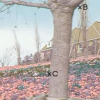Free Online Productivity Tools
i2Speak
i2Symbol
i2OCR
iTex2Img
iWeb2Print
iWeb2Shot
i2Type
iPdf2Split
iPdf2Merge
i2Bopomofo
i2Arabic
i2Style
i2Image
i2PDF
iLatex2Rtf
Sci2ools
CVPR
2001
IEEE
2001
IEEE
Handling Occlusions in Dense Multi-view Stereo
While stereo matching was originally formulated as the recovery of 3D shape from a pair of images, it is now generally recognized that using more than two images can dramatically improve the quality of the reconstruction. Unfortunately, as more images are added, the prevalence of semioccluded regions (pixels visible in some but not all images) also increases. In this paper, we propose some novel techniques to deal with this problem. Our first idea is to use a combination of shiftable windows and a dynamically selected subset of the neighboring images to do the matches. Our second idea is to explicitly label occluded pixels within a global energy minimization framework, and to reason about visibility within this framework so that only truly visible pixels are matched. Experimental results show a dramatic improvement using the first idea over conventional multibaseline stereo, especially when used in conjunction with a global energy minimization technique. These results also show that e...
Computer Vision | CVPR 2001 | Energy Minimization Framework | Energy Minimization Technique | Explicit Occlusion Labeling | Global Energy Minimization | Visible Pixels |
| Added | 12 Oct 2009 |
| Updated | 29 Oct 2009 |
| Type | Conference |
| Year | 2001 |
| Where | CVPR |
| Authors | Sing Bing Kang, Richard Szeliski, Jinxiang Chai |
Comments (0)

